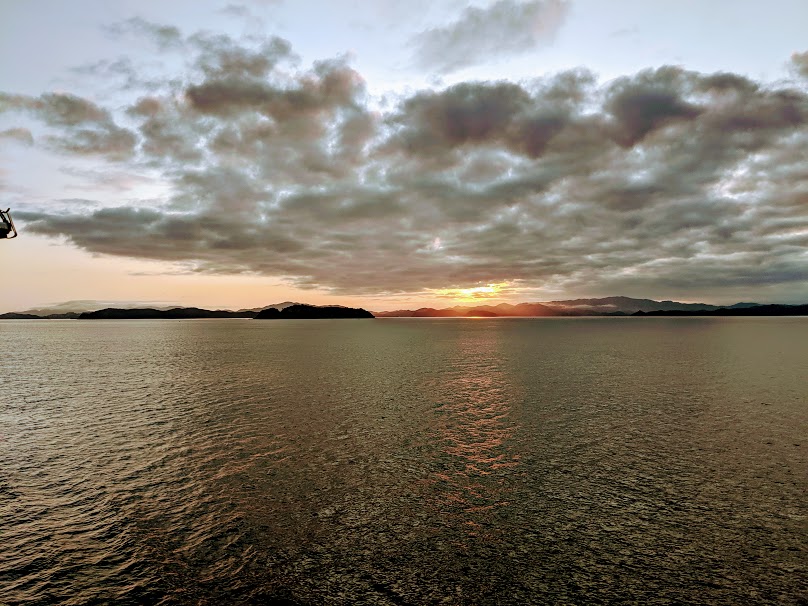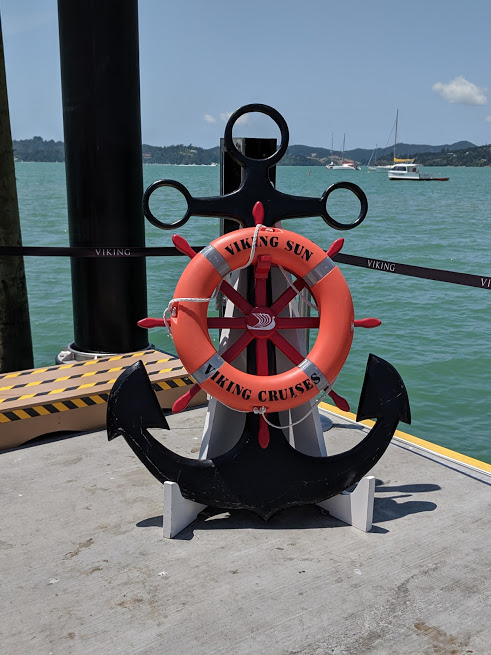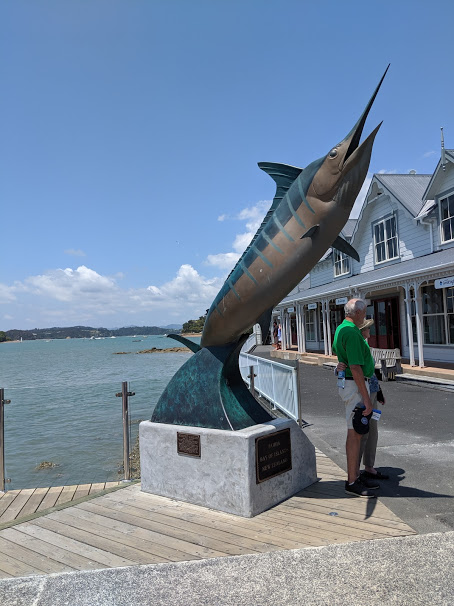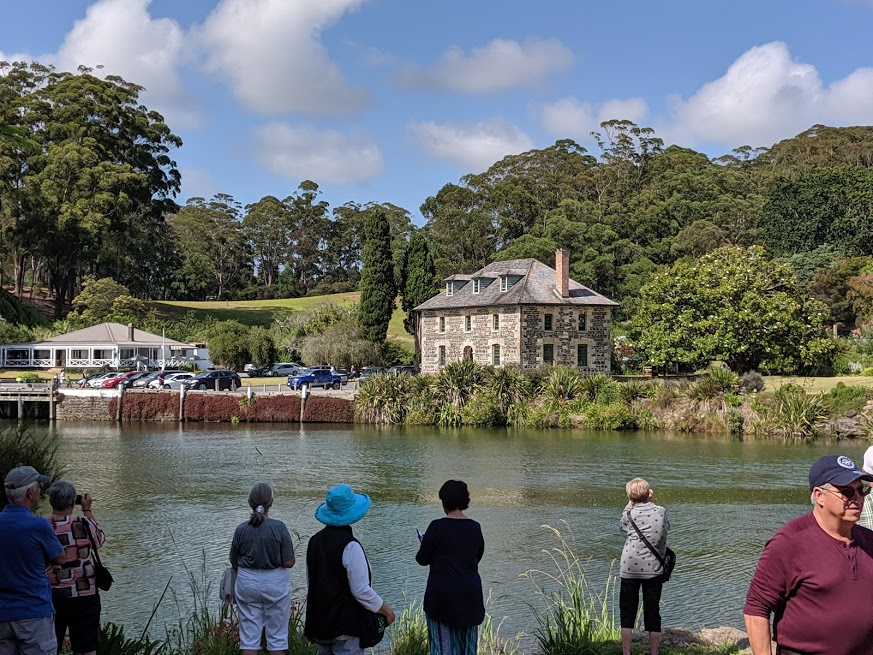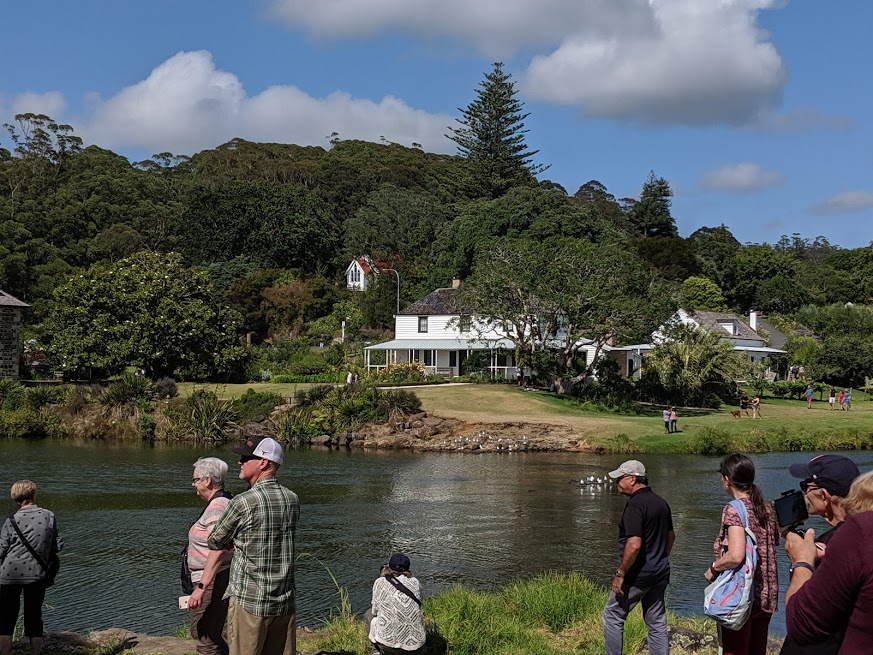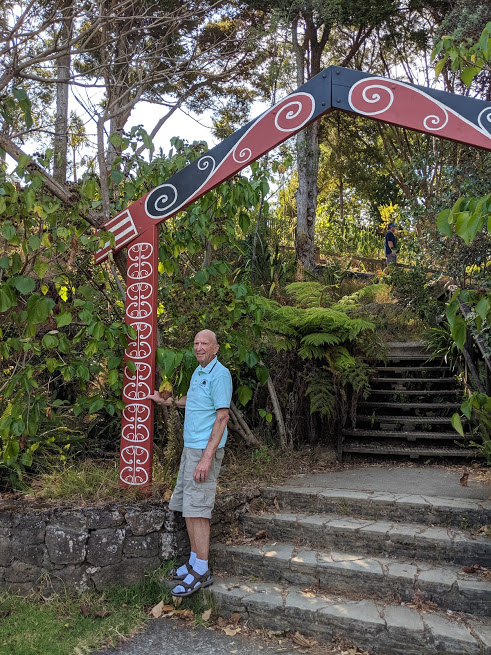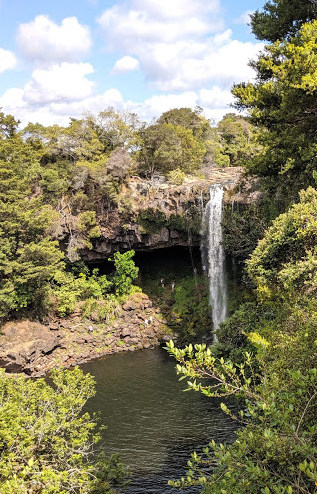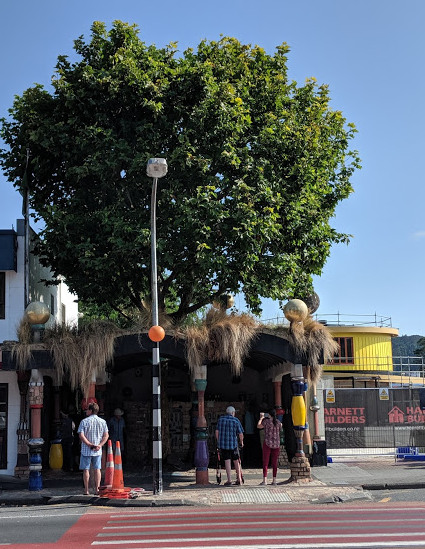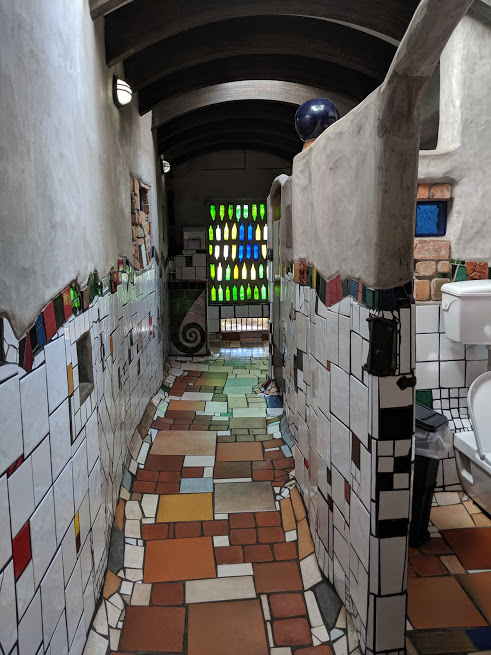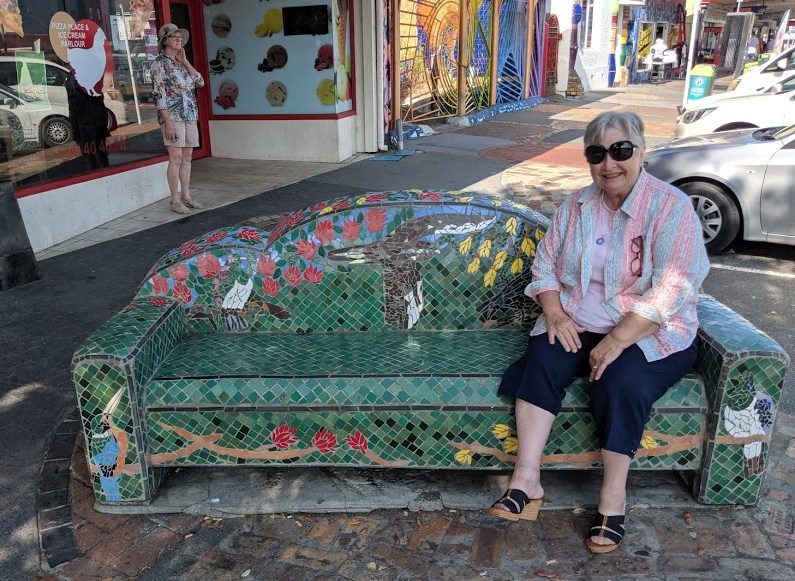
Early this morning I stepped out onto the balcony and was hit with a wonderful fragrance of flowers. Fruit trees maybe. We were a ways from the shore so it must have been sent on the wind. A lovely surprise. I found others had noticed it also.
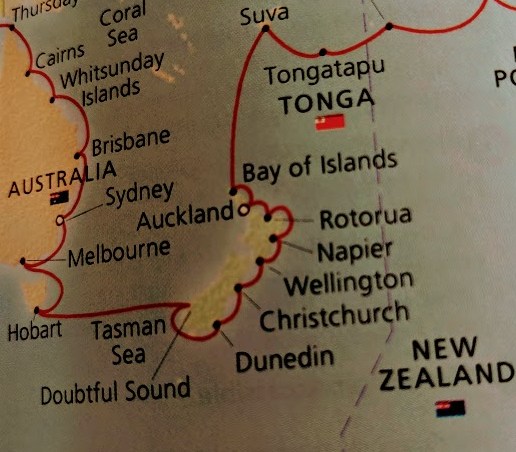

New Zealand is one of the last lands to be settled by humans. It is two large islands split by the Cook Strait. Our first stop is the north tip of the North Island, the gateway to more than 150 islands that comprise the Bay of Islands. Waitangi played a central role in the history of New Zealand. On Feb 6th, 1840, the Treaty of Waitangi was signed by British officers and Maori chiefs, granting sovereignty over the growing nation to Queen Victoria. A public holiday since 1974, Feb 6 of each year the Kiwis (as they are lovingly called) will celebrate Waitangi Day.
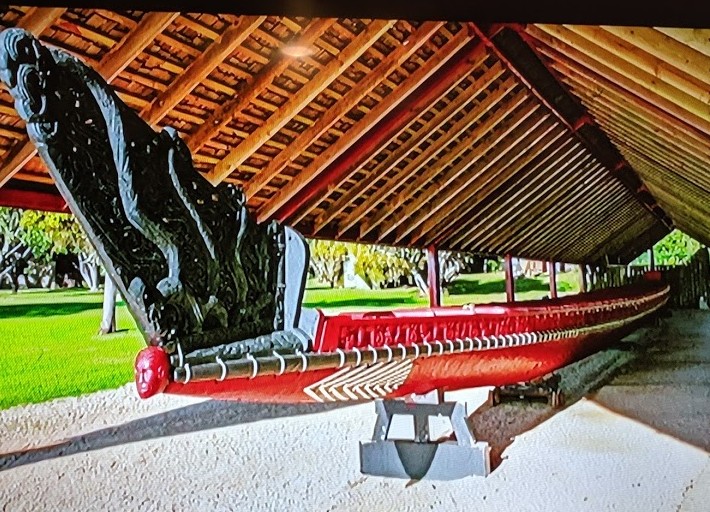
Giant marlin on Paihia waterfront. In 1926, Zane Grey the famous American Western author put New Zealand on the map for the world’s biggest striped marlins. He himself held many world records for catching big-game fish. He described the Bay of Islands in Tales of the Angler’s Eldorado, New Zealand. Since this will be a short blog post, I’ll add this excerpt from that book.
“A mako shark so huge that he absolutely paralyzed me with terror emerged with a roar of water to go high in the air …. I was thrown from my chair … He looked at least seventeen feet long … A peculiar feature of the mako is that his eyes stand out prominently from the sides of his head and these were fully as large and round as half a grapefruit. They were intensely black and full of fiendish fire … he shut his jaws with a convulsive snap like that made by a two-foot bear trap.” ~ Zane Grey
Our bus tour took us to see the country’s oldest buildings dating back to the early 1800’s, the stone-constructed Stone Store and the missionary’s wooden Kemp House in the historic Kerikeri Basin. We then saw the Rainbow Falls along the Kerikeri River during “dry” season. There are people hiking into the cave beneath the falls.
We then drove to the quaint town of Kawakawa, home to the quirky public bathrooms designed by world-famous artist Friedesreich Hundertwasser. Tile art all around town.
